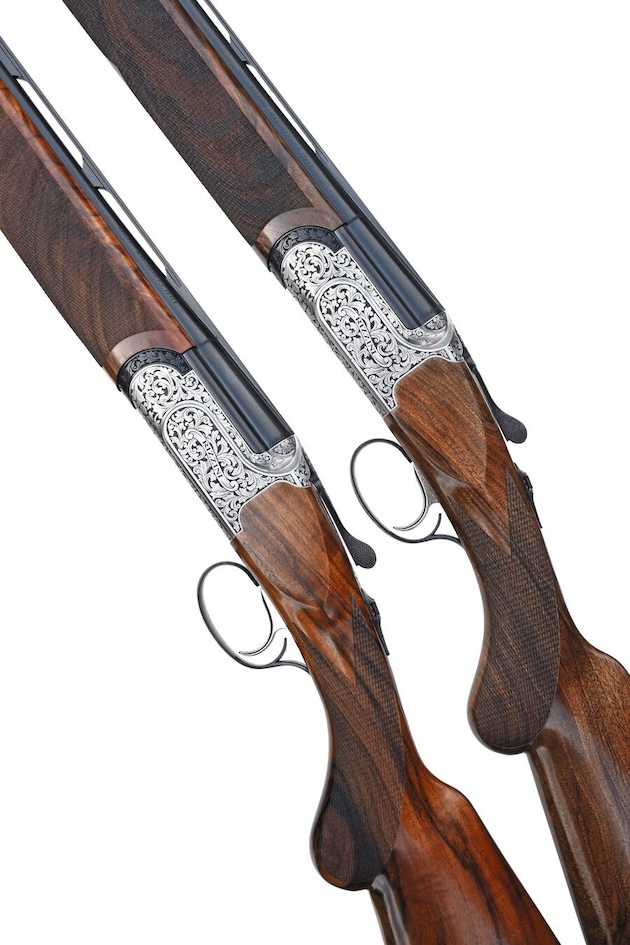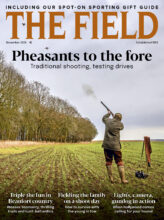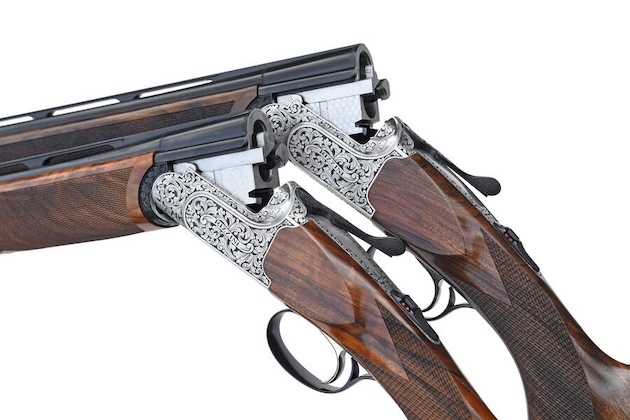The rare opportunity to directly compare the handling and performance of a 28-bore and .410 of similar specification yields some unexpected results for Michael Yardley
Rizzini BR221 comparison
For the November 2025 issue of The Field, I was testing two new BR221 guns from Rizzini imported by Anglo Spanish Imports (ASI) of Snape: one is a 28-bore, the other a .410. These guns are light; the 28-bore weighs just 5lb 4oz and the .410 5lb 7oz (a little heavier than the 28-bore because of thicker chamber walls in the monobloc barrels). Launched at The Game Fair this year, the Brescian guns under our microscope both have 30in ventilated-rib barrels, single selective triggers and semi-pistol-grip stocks (other options are available).
“It is interesting to note that the .410 is heavier than the 28-bore. In fact, this is to be expected, as the action is common for both bores and there is consequently more meat in the monobloc of the .410. Most people tend to assume that the smaller bore is always lighter,” says Edward King of ASI. “Rizzini is one of the few makers in Brescia to specialise in small-bore shotguns: they have put extensive work into barrel profiles and materials, and I feel this is noticeable in the way their small bores handle.”
The test 28-bore is 3in proofed for high-performance steel shot cartridges (not yet commonly available) and the .410 for normal 3in ‘magnum’ loads. These seem to be becoming the standard .410 fodder, and subsonic loads are also increasingly popular among those with moderated guns. There are steel .410 cartridges on offer in the US now (Federal markets them, in addition to tungsten) but they are not being imported into the UK routinely thus far.
As noted, the test guns share the same action body (Rizzini has dedicated 28-, 20-, 16- and 12-bore actions) and similar deep scroll engraving: lasered with hand finishing. In essence, these guns are a round-body/square-bar hybrid with a refined and pleasing new shape. Rizzini has left the action walls flat but has reworked the area around the knuckle to match that of its Round Body (RB) series guns. External hinge-pin caps, a signature feature on many Gardone over-and-unders, have been removed too in this streamlining exercise. The forward shape is now pleasantly round and uncluttered, and the action is also marginally lighter overall.
These new guns look especially smart with their deep engraving and come up well. I found the grip and trigger shapes particularly comfortable. The balance was good too – both about 15mm forward of the hinge centre. Because of this, and the excellent hand shapes, they did not feel as wand-like as some light small-bores (Rizzini also offers a well conceived full pistol). I particularly liked the slightly heavier .410. The 6mm ventilated sighting rib suited the gun, although a solid rib – as seen in the similar RB EM Deluxe – would work well and add a little weight if required. This more expensive deluxe model also boasts an extended trigger-guard, a hand-engraved grip cap and higher-grade wood.
The genesis of these guns is interesting. About 20 years ago, Paul Roberts took a square-bodied Rizzini to Gardone artisan Laura Bosis and asked her to file it up. She did this to great effect. The colourcase- hardened, smoothed but plain and rounded action that emerged was unusually stylish. It ended up being marketed as the Rizzini RB Classic. An RB EL followed with medium scrollwork and an RB EM with bolder scroll. These led to the present range of square- and round-bar guns with and without sideplates. The smaller bores work especially well aesthetically and functionally.
What about the shooting qualities of these guns in smaller bores? The proportions please, they’re lively and typically much fun to use. You may, however, need to slow down and, paradoxically, put a little more muscular effort into each shot. Although the gun is lighter a certain precision is called for. Think quick to start, quick to stop too, so push on smoothly as well.

Grip and trigger shapes are comfortable
Technical
These guns follow the trunnion-hinged, bifurcated-lump, trigger-plate pattern so popular in Brescia. The design is now much evolved. CNC has made better guns easier and cheaper to produce. It has also enabled deep scroll engraving that now almost matches handwork to the untrained eye and is a vast improvement on rolled-on decoration when done well (lasers usually cut/burn down, so experts can still tell the difference easily). Mechanically, Rizzinis – though significantly refined externally – are simple and rugged internally. They have a replaceable Browning-style bolt rearwards. The single selective trigger is a mechanically assisted inertia design to ensure reliable function with light loads. There is a slight change to the multichokes in the 28-bore now: choke length has gone from 45mm to 60mm, reportedly to improve pattern. The bore diameter in the 28-bore is 14mm and 10.4mm in the .410.
Shooting impressions
I have had good experiences with Rizzinis – they usually function reliably and please aesthetically. Shooting these two side by side was interesting because it is rare to compare a .410 and 28-bore with similar specifications directly. You bring prejudice to any test: mine was that the 28-bore would be easier to shoot. This was not the case. They both shot well. The .410, though light (I only discovered how light later), was still unexpectedly stable. The single trigger was matched to the excellent Rizzini semi-pistol grip. I felt I had more subtle control of this .410 than some others. It could be used surprisingly precisely. Recoil was no issue. The 28-bore shot without vice too. With guns this light you might be tempted to consider a 32in gun if ordering, creating the interesting possibility of a sub-6lb 32in gun. That said, the 30in .410 was much fun to shoot. Both BR221s were well engineered, pretty and offered value for money.
Rizzini BR221 RRP £3,255





